"Just stay there for a second," she says, as I stand in the middle of the road surveying the burnt trees, the ale coloured sky, dense with smoke, the dreadful silence, the heat pulsing off the ground.
Subscribe now for unlimited access.
or signup to continue reading
"I want to get the scale of this."
Scale. If hell had a cathedral, I think to myself, it would look like this.
Photographer Sylvia Liber and I are on the Nerriga Road, west of Nowra on the NSW South Coast. The road is closed to all but emergency vehicles and accredited media. We have pulled over to take in the utter devastation.
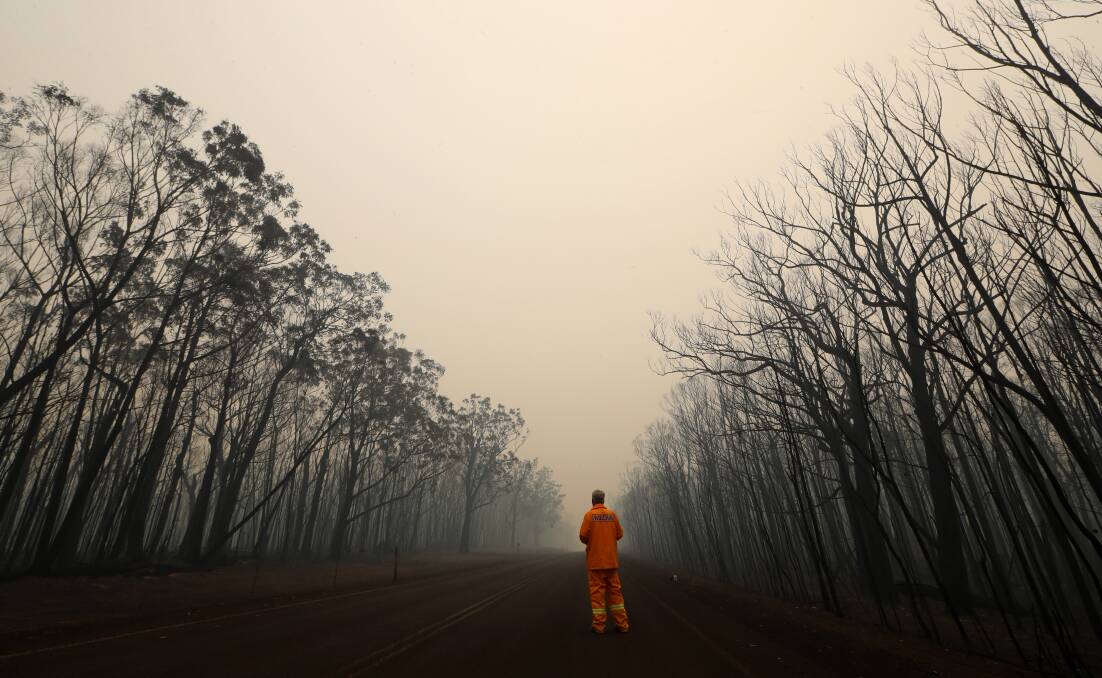
It is Monday, December 30, 2019.
What began as the Currowan Fire on November 26 has grown steadily for a month. Across this pristine holiday coast south of Sydney, the blazing beast has menaced towns, incinerated forests, cut highways, sown fear and upended lives.
On December 30, it pauses long enough to allow Sylvia and I up this lonely road. We are awed by the devastation, unnerved by the silence. No insects, no birdsong, no leaves stirring. The sound of the end of the world.
Sylvia's simple but striking photo captures perfectly this moment in time. A lone figure in a high-vis fire suit dwarfed by an apocalyptic landscape, haunted by the soaring skeletal remains of blackened trees.
The next day - New Year's Eve - the inferno wakes with blind rage, spearing out of the hinterland ahead of a searing nor' wester, taking with it towns like Quaama, Cobargo, Rosedale, Malua Bay and Conjola Park.
From her base in Wollongong, Sylvia returns to cover the blaze as it jumps the Shoalhaven River, threatening properties north west of Nowra, including mine.
She goes to Conjola Park near Ulladulla, which has lost numerous homes. One of her photos from there ends up winning a Walkley Award.
I spend New Year's Eve packing the van and preparing the home as a monstrous column of smoke grows to the south. Early in the afternoon, a wind shift sends the smoke over our neighbourhood, turning the sky first red then pitch black.
I've not known terror quite like it. How will I react if the embers arrive, I keep asking myself. How will I cope if we lose our house and all our material treasures?
But we are fortunate. The smoke comes but the flames do not. Still, it's too close for comfort and we evacuate ourselves to Sydney the following weekend.
Back to the burnt zone
Two years on, I reunite with Syvlia to return to the burnt zone. Before setting out, I check the weather and Floods Near Me apps. Rain not flame has become the hazard in December 2021 - this La Nina year - and it pays to check for storms and flooded roads.
As the road rises from Nowra, we notice the change. For the most part, the bush appears to be flourishing once more. There are patches where it is obviously struggling - dead trunks and limbs claw at today's blue sky but the undergrowth is thick and green. The fire was particularly ferocious here.
We find the spot where the hell's cathedral shot was taken. It's almost unrecognisable now. The trees are cloaked with leaves, the road verges emerald. There's the faint buzz of insects.
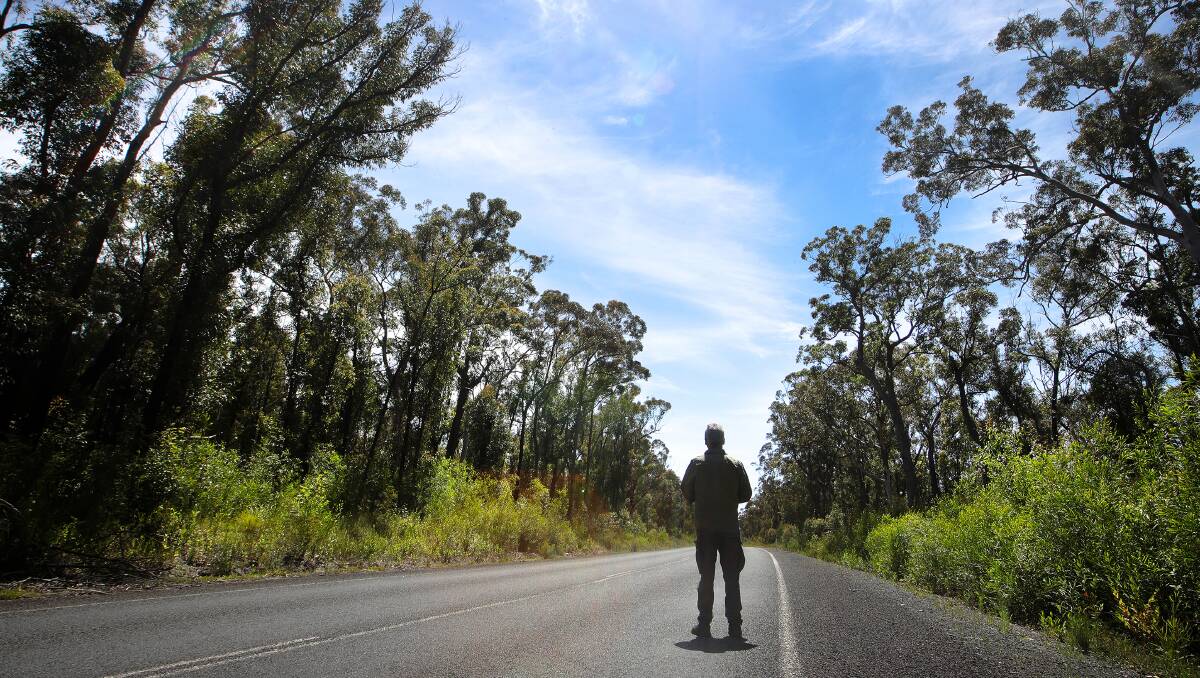
Tianjara Falls, two years ago an ashen wasteland, is alive with the roar of cascading water. Life has returned, tentatively in some places, abundantly in others. A big lizard gambles it all crossing the road ahead of us.
But what of the people? The folk Sylvia photographed on and after that fateful last day of the last decade?
In Tapitallee, near the spot the fire jumped the Shoalhaven River, we find 82-year-old Nanette Ryan, who was told to evacuate.
Her dad was a fire captain back when there were no fire trucks and volunteers made their way to the fire ground in their own vehicles, equipped with little more than wet hessian sacks and rakes.
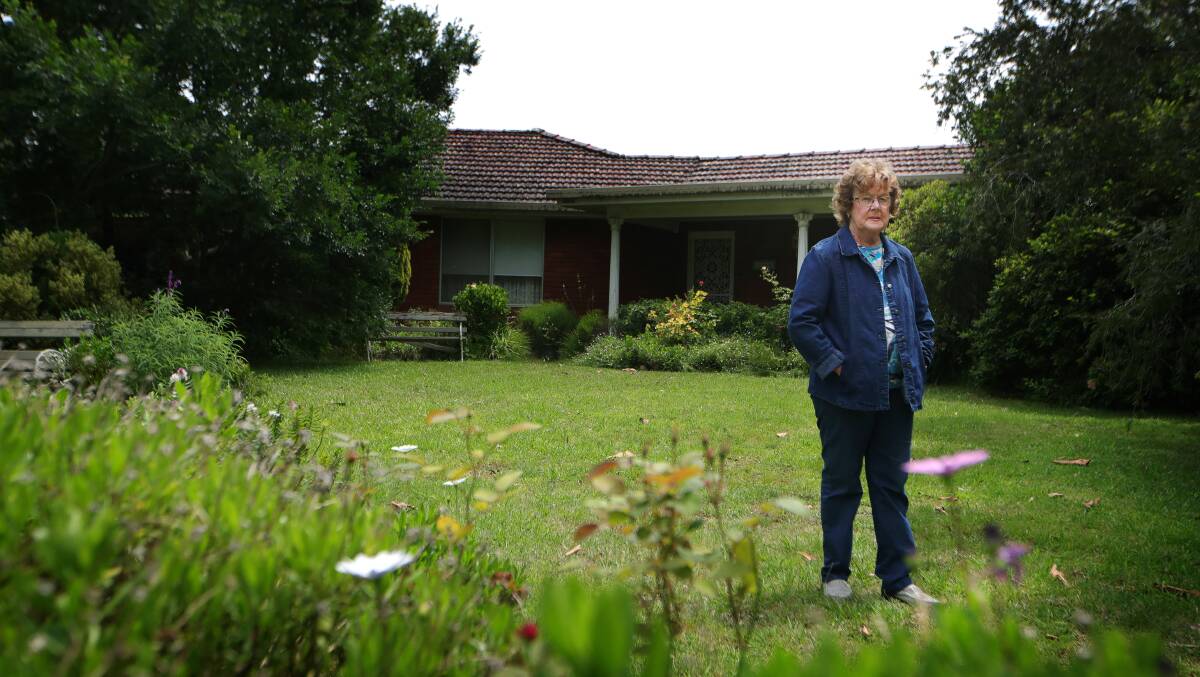
"The fire was very close. But we've had them here before. I've lived through fires for years but nothing as bad as that."
She knows this year's rain has reduced the fire risk for now but still worries about what the future might hold.
Down the road, Robert Oldenburg says he'd be unlikely to stay and defend again, even though the fire didn't affect his property.
"I think I'd grab what I can and go. In the end the house is insured and you can rebuild and do all that," he says.
He is concerned about the regrowth in the forest that was burnt: "The undergrowth is so big, so thick, where you used to be able to see around corners you can't any more and you think, 'If a fire gets into that again ...'."
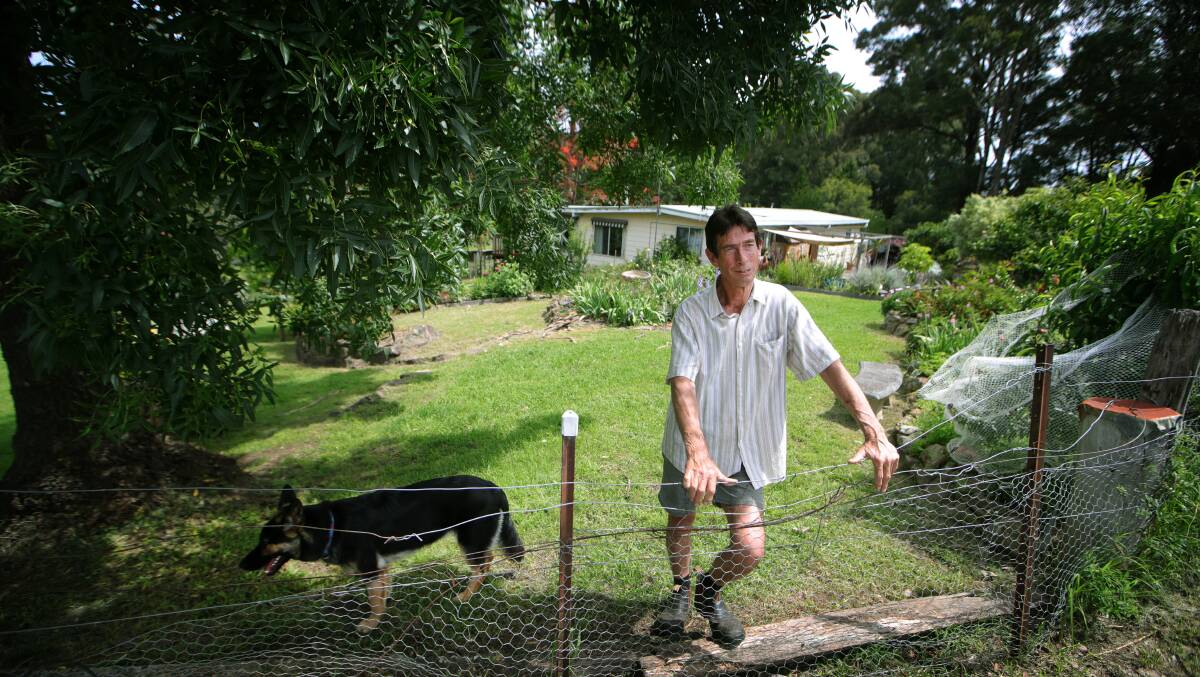
Survivors trying to rebuild
We talk to survivors in Conjola Park in a street that mirrors the uneven renewal of the bush. On one side, the Duncombes, Gail and and Wayne. On the other, the Webbs, Christine and Adam.
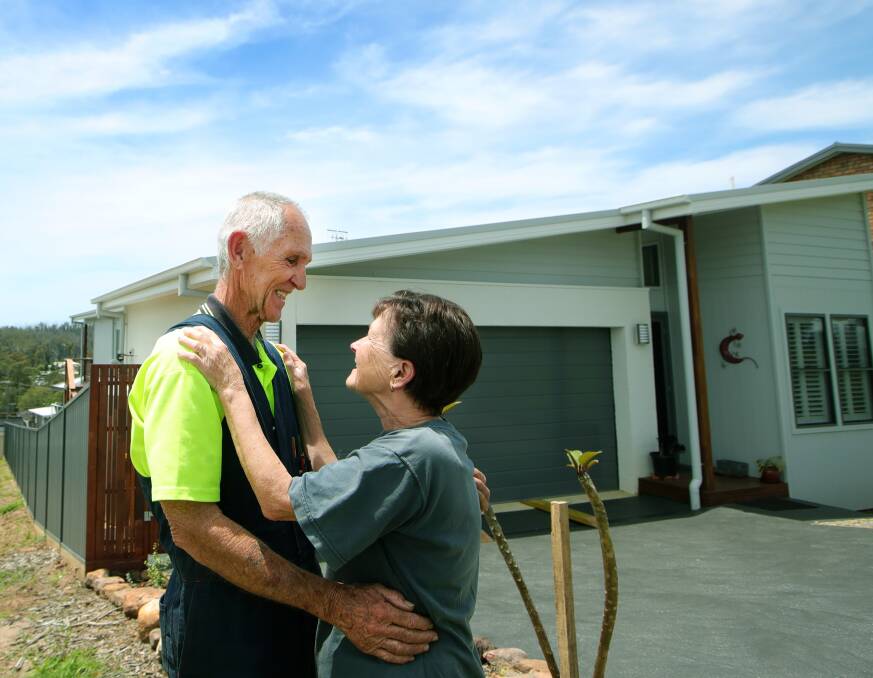
The Duncombes' new house is pretty much complete, the garden young but flourishing. They're happy to have a roof over their head and the glorious lake views but there's a lingering sadness over the loss of their original cottage.
They'd been renovating it bit by bit over the 20 years they'd owned it and were finally finished six months before the fire took it from them.
Now the new house is built, the loss is being felt afresh.
"A memory came up on Facebook of the older home," says Gail. "I actually put a comment on there, 'Some people won't understand this but I still miss my little cottage and I wish it was here.' That's just how we feel."

The Duncombes count themselves as fortunate. Over the years their centre of gravity had shifted from their Sydney home to their Conjola Park weekender.
"We were spending more time down here than up there but we kept the place up there," says Wayne.
Their Sydney house had become the holiday home but it served as their base while the Conjola Park dwelling was built, a process hampered by the arrival of COVID.
A memory came up on Facebook of the older home. I actually put a comment on there, 'Some people won't understand this but I still miss my little cottage and I wish it was here'. That's just how we feel.
- Gail Duncombe
The pandemic struck while the couple were in Tokyo, booked for a cruise on the ill-fated Diamond Princess. They managed to get to Australia just as the country went into its first lockdown.
"We stayed up in Sydney for quite a while. We let this get built and we just stayed up there," says Gail.
Across the road, the Webbs are living in a caravan on their block. They'd been living in a rental property but the owners decided to move in themselves. Despite the cramped conditions, Christine says the move is positive.
"Being back up here is something again. You feel like you're home and you breathe a little bit differently and you're just that little bit more relaxed because you're back on your place and you're doing your things," she says.
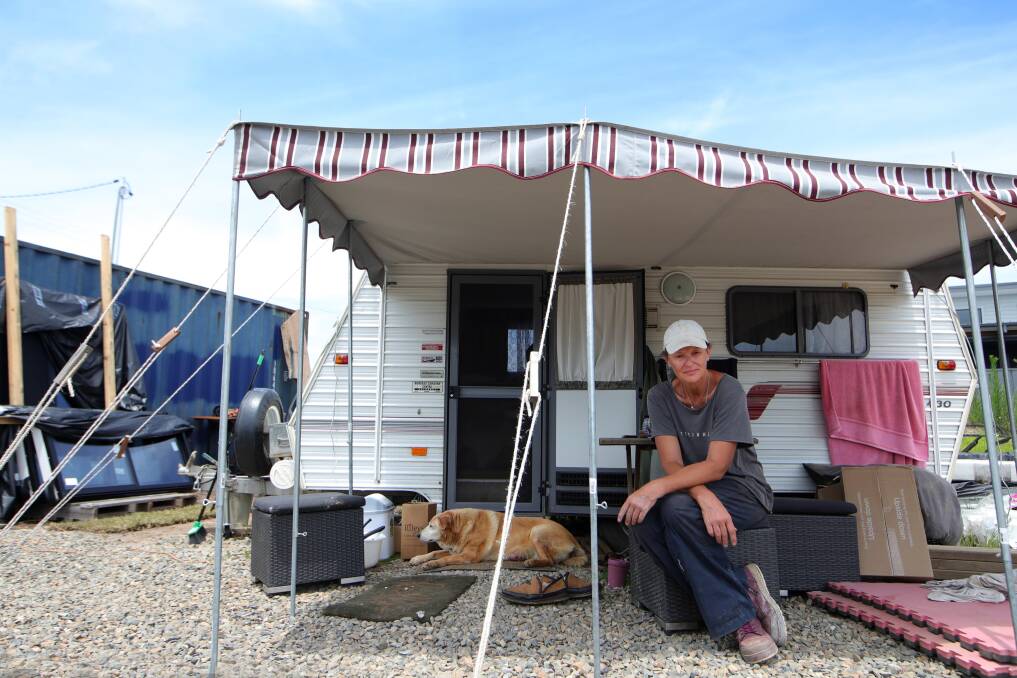
Their rebuild has been a stop-start affair made worse by COVID's interruption of supply chains. At first, she wasn't ready to think about rebuilding. Then, when she was, Adam wasn't.
When costs began rising, they decided to build a shipping container home but even that idea became too expensive.
"We've moved up here, pretty much scrapped all the plans and we're starting again," Christine says.
The two years since the fire have been exhausting. Rarely a day passes without tears and sometimes it's the simple things that open the floodgates.
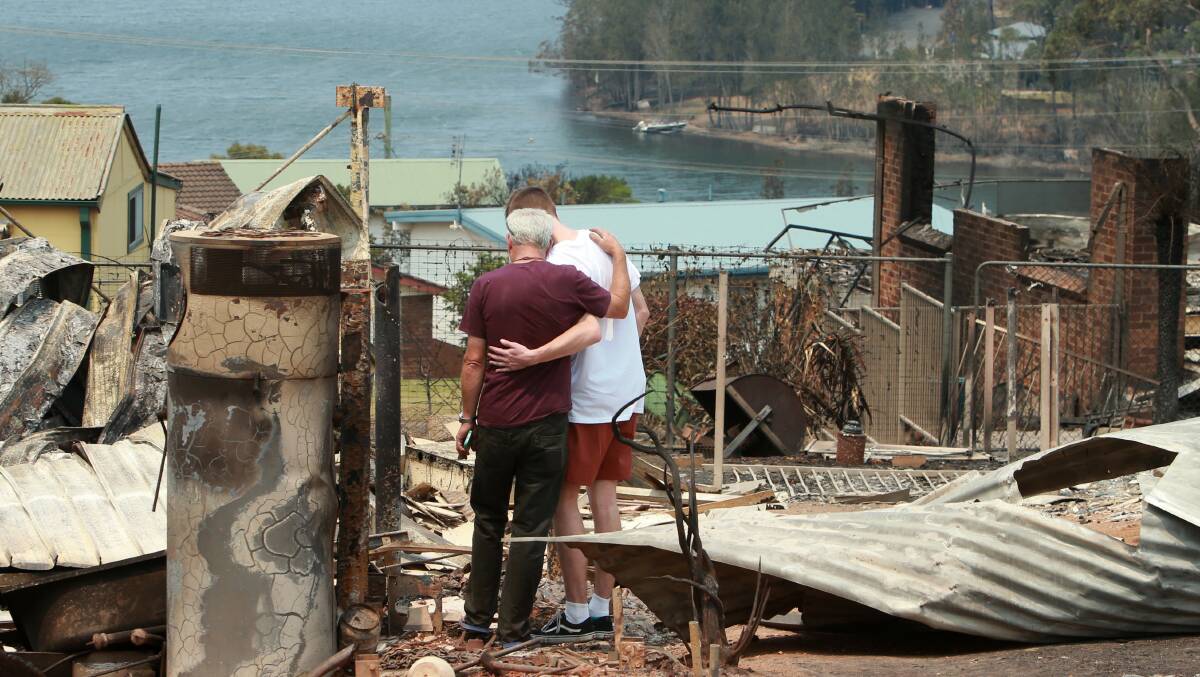
"We went looking for a cake tin. Both of us swore black and blue that we'd replaced it and we turned the place inside out and then just looked at each other and sat on the floor and cried, remembering it was back here and we were looking for something that didn't exist any more."
The lingering trauma
We make our way down past Cobargo to Quaama, a small village off the highway which felt the full brunt of the inferno but didn't get the media attention of its bigger neighbour.
There we encounter Jenni Bruce, an artist from Upper Brogo whose story we told in ACM's The Lost Coast series in February 2020. She'd lost everything, was still in the grip of what she called "fire brain" and was taking each day as it came.
The trauma is still there. You can see it in her eyes. But she's moved forward from that bleak time when we met her.
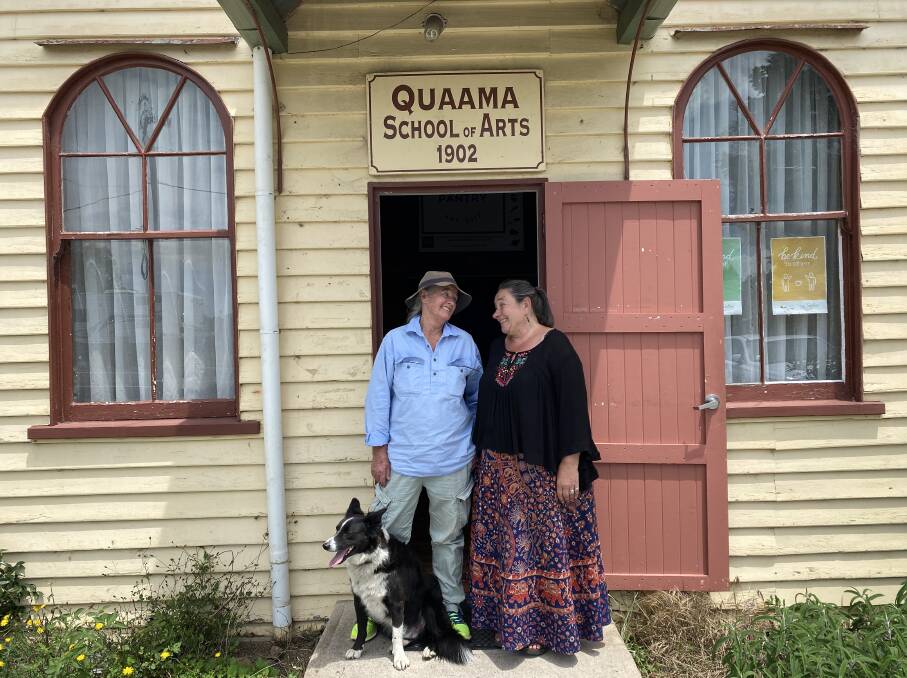
"It's been a total mixed bag of one step forward, two steps backwards, six sideways. Sometimes, it's an absolute joy. Sometimes, absolute despair," she says.
One absolute joy was the return of water.
"The day we finally got all the poly pipe replaced from the dam to the tank to the garden and we turned a tap on and water came out. Nothing's ever simple. Pumps had to be replaced, all the water lines had to be replaced because they were damaged even though they were underground, the fire was so intense."
Like many of us caught up in the fire, she watched with dismay the shift from great generosity to meanness as COVID and lockdowns warped the behaviour of some people.
"I don't know what my reaction would have been if I'd walked into the supermarket and people were barneying over dunny paper," she says. "I don't know whether I would have laughed or walked over and decked both of them."
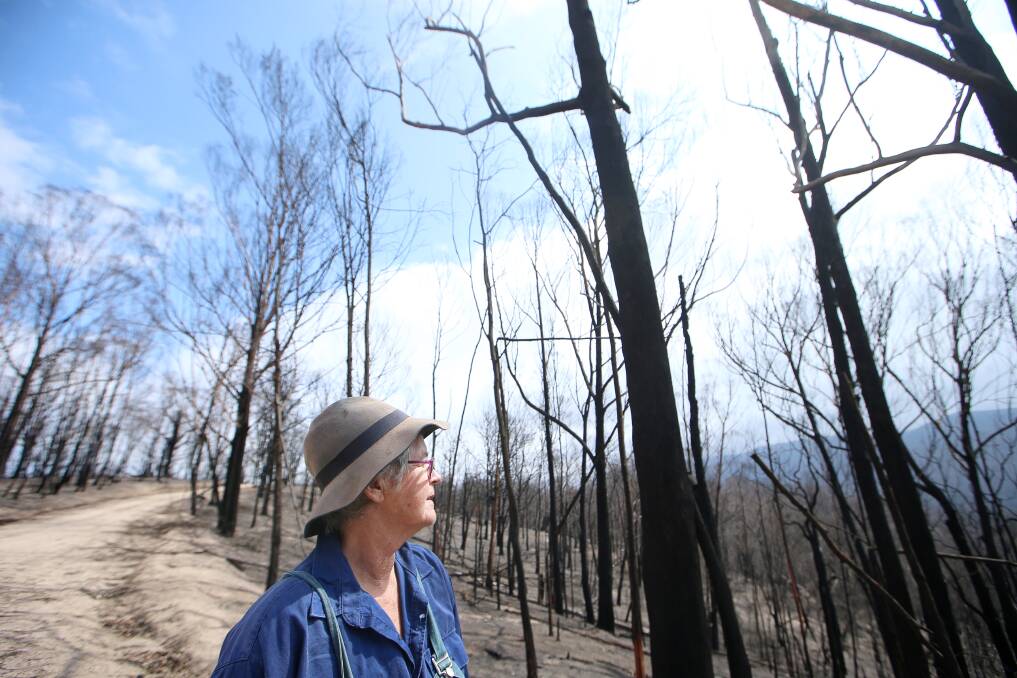
Hoarding did make life difficult for people like Jenni, who live remotely and only get to town occasionally for supplies.
"Everyone took up cooking. I went into town to buy flour and supplies as I do when I do do a large shop because I don't shop very often. I could not buy flour, sugar, even the instant baked cakes, the shelves were just stripped."
Veronica Abbott, who ran the relief centre in Quaama, says hoarding also became an issue when supplies of bottled water, on which the village relied, became scarce.
"We did see a quick change after the first few months of absolute generosity, getting lots of things that we actually probably didn't need but thank you for the thought, to people hoarding things," she says. "It was really bizarre to be watching these videos of people fighting over toilet paper. Hang on, this wasn't who we were two weeks ago."
Veronica's focus has shifted from relief to renewal, a necessary step out of the fire disaster.
"We as a community have all been wearing this T-shirt that says Bushfire Victim. But that's not who we are. To the outside it was, 'Oh those poor people.' But we're not just people who got hurt by fire, we are artists and school teachers and all the other things that were part of who we were before. We need to bring them back to be whole people again."
Venturing into the burnt zone brings back many memories, some haunting, others abundantly enriching. The landscape is still scarred but is healing. And just as every fold in the landscape will renew itself at a different pace, so too will the people.
As harrowing as the fires were, they did bring Australians together as a community and we should never forget that.
Nor should we let COVID dull the shining humanity we saw when we faced down our darkest time in living memory.
- Sylvia Liber is a photographer for the Illawarra Mercury. Journalist John Hanscombe, a former editor of the South Coast Register, writes for The Canberra Times and the ACM network.














